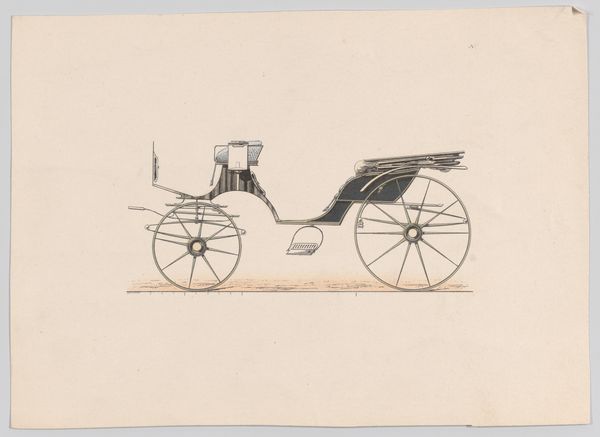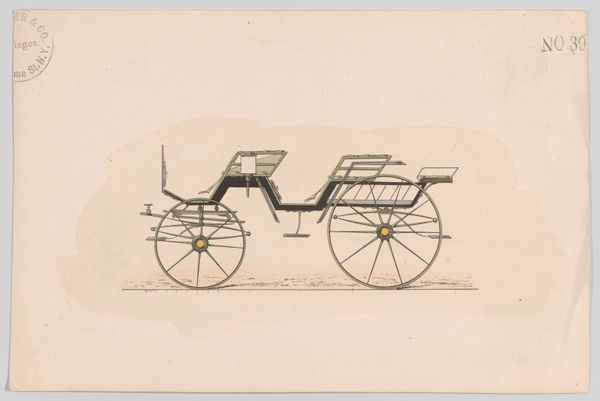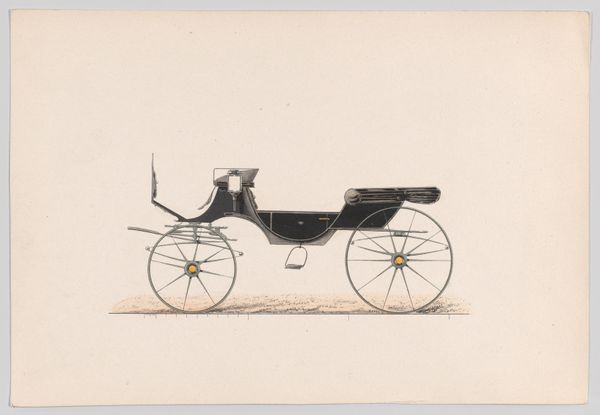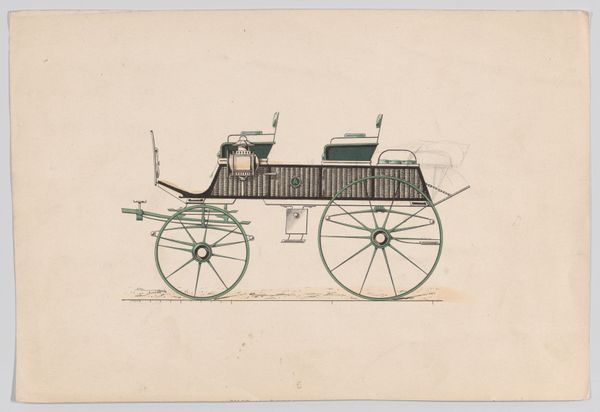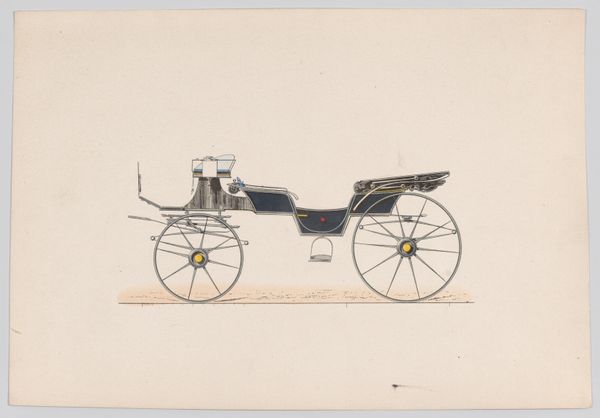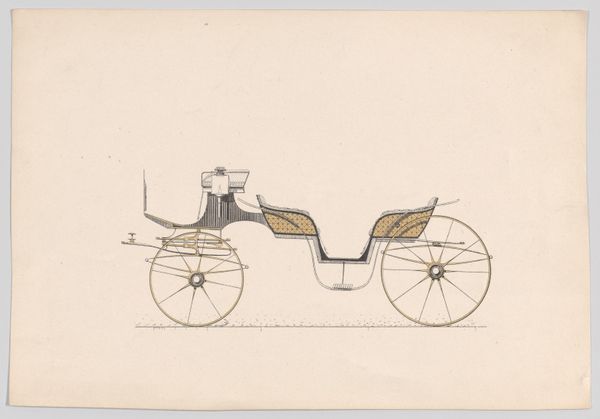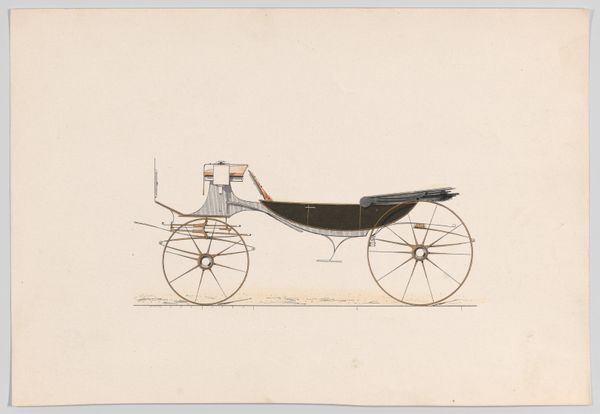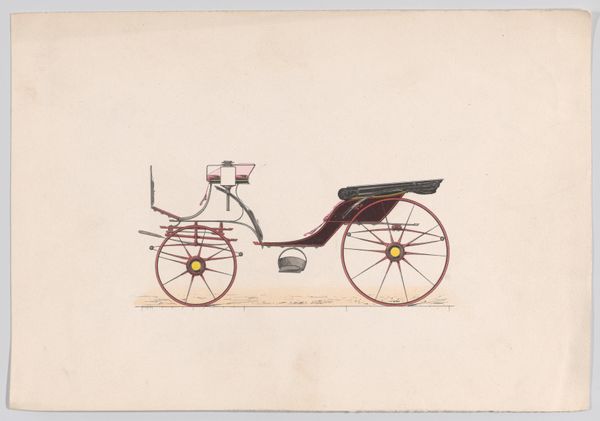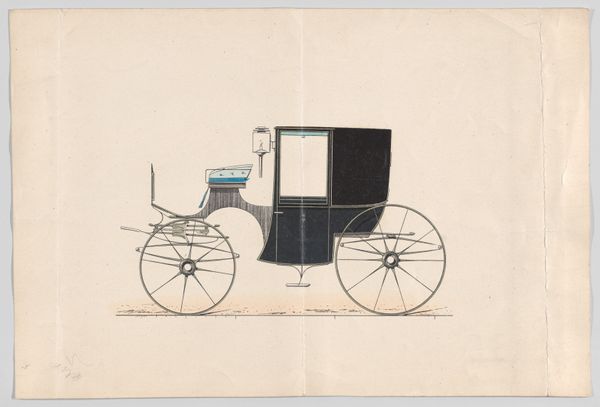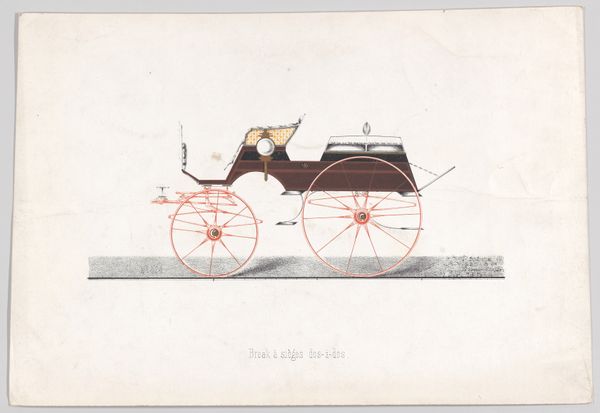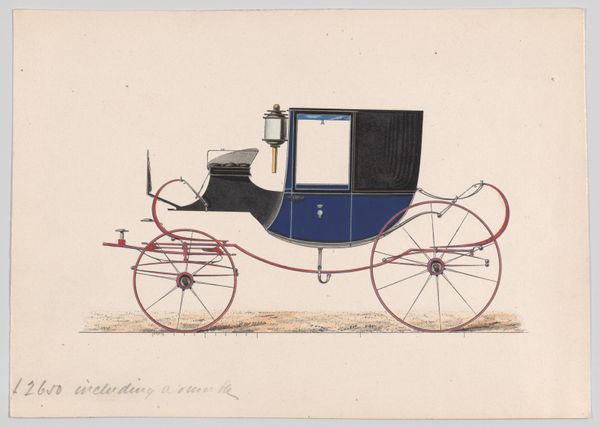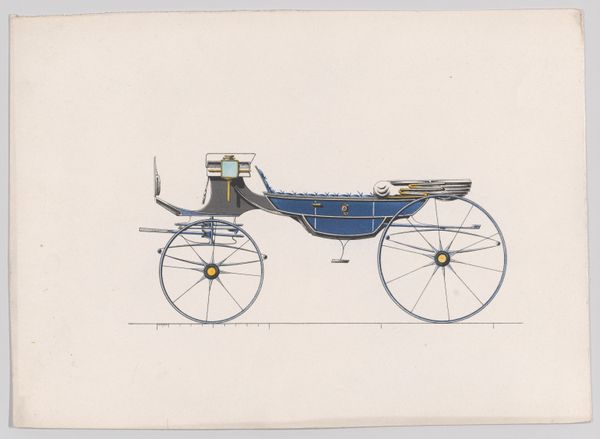
drawing, print, watercolor
#
drawing
# print
#
landscape
#
watercolor
#
geometric
#
watercolour illustration
#
academic-art
#
watercolor
Dimensions: sheet: 6 3/16 x 8 7/8 in. (15.7 x 22.5 cm)
Copyright: Public Domain
Editor: Here we have an anonymous design for a "Vis-A-Vis Carriage" from 1880, a drawing that includes both print and watercolor. It seems so precise, almost like a technical diagram. What can you tell me about it? Curator: This drawing, seemingly detached in its presentation, is actually deeply embedded within the socio-political landscape of the late 19th century. The "Vis-A-Vis" carriage, where passengers faced each other, wasn't merely a mode of transport, but a carefully constructed social space, exclusively for the upper classes. Think about who had access to this luxury. Who was being excluded from such experiences? Editor: So, it's not just about the carriage itself, but what it represents? Curator: Precisely. It's about the performative aspects of wealth and power during that era. The meticulous detail in the drawing – the exactness of the wheels, the polish implied in the carriage’s body - points to the premium placed on outward appearances and status. What sort of power dynamics might a "vis-a-vis" seating arrangement encourage? Editor: Maybe it's about facilitated conversation, or maybe creating even more pronounced divisions? Depending on who is given more space, or allowed to speak... Curator: Absolutely. It’s essential to examine how even seemingly innocuous objects like carriages contributed to broader systems of inequality. The landscape, a flat monochrome ground, underscores the dominance of the manufactured object. It's a reminder that even artistic depictions were never truly neutral but part of larger economic and social structures. Editor: I never considered the landscape in that light. Thanks to your comments I realize that there's more to this image than meets the eye. Curator: That’s precisely the point. Objects often serve as quiet monuments to privilege and exclusion.
Comments
No comments
Be the first to comment and join the conversation on the ultimate creative platform.
